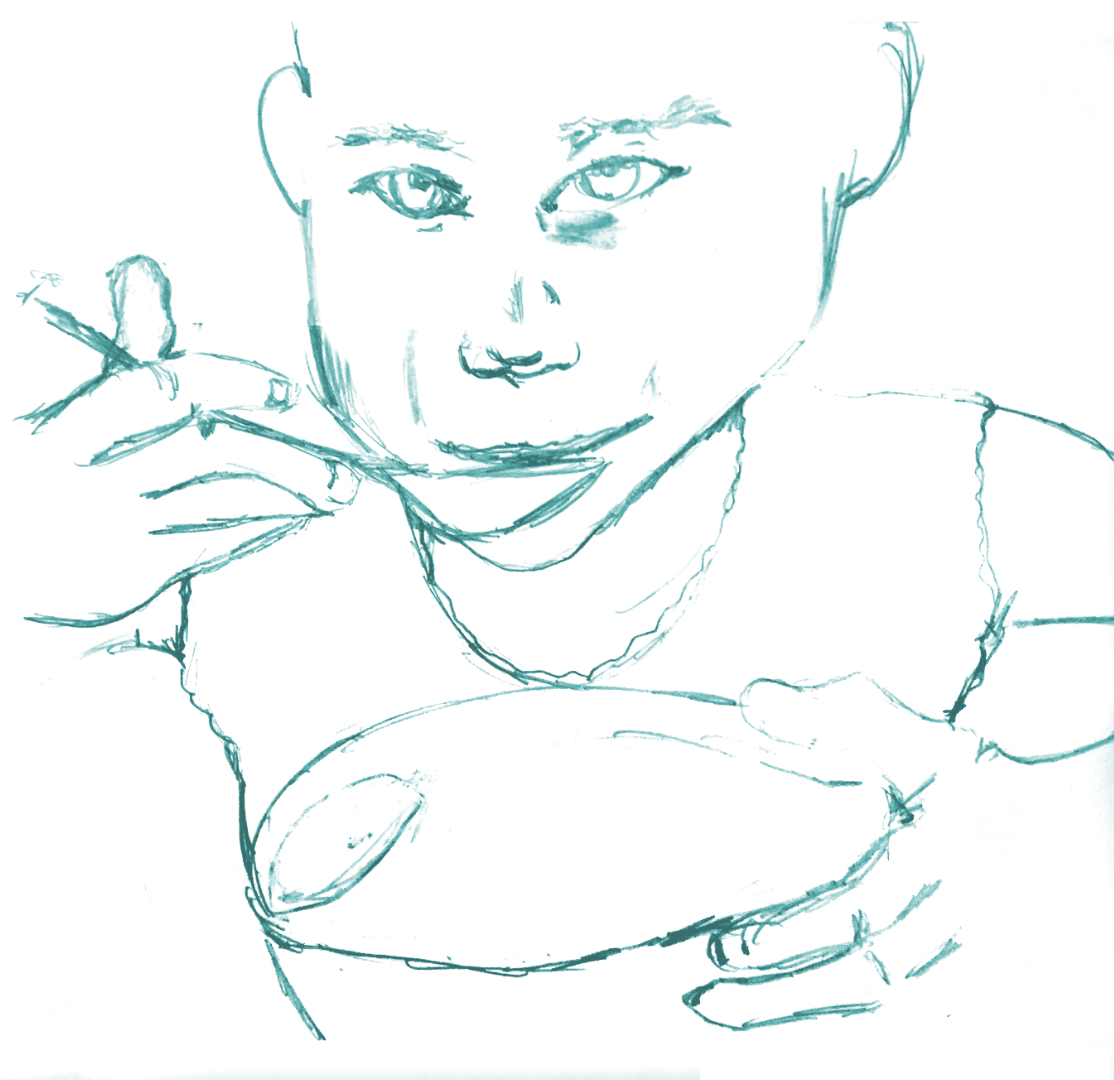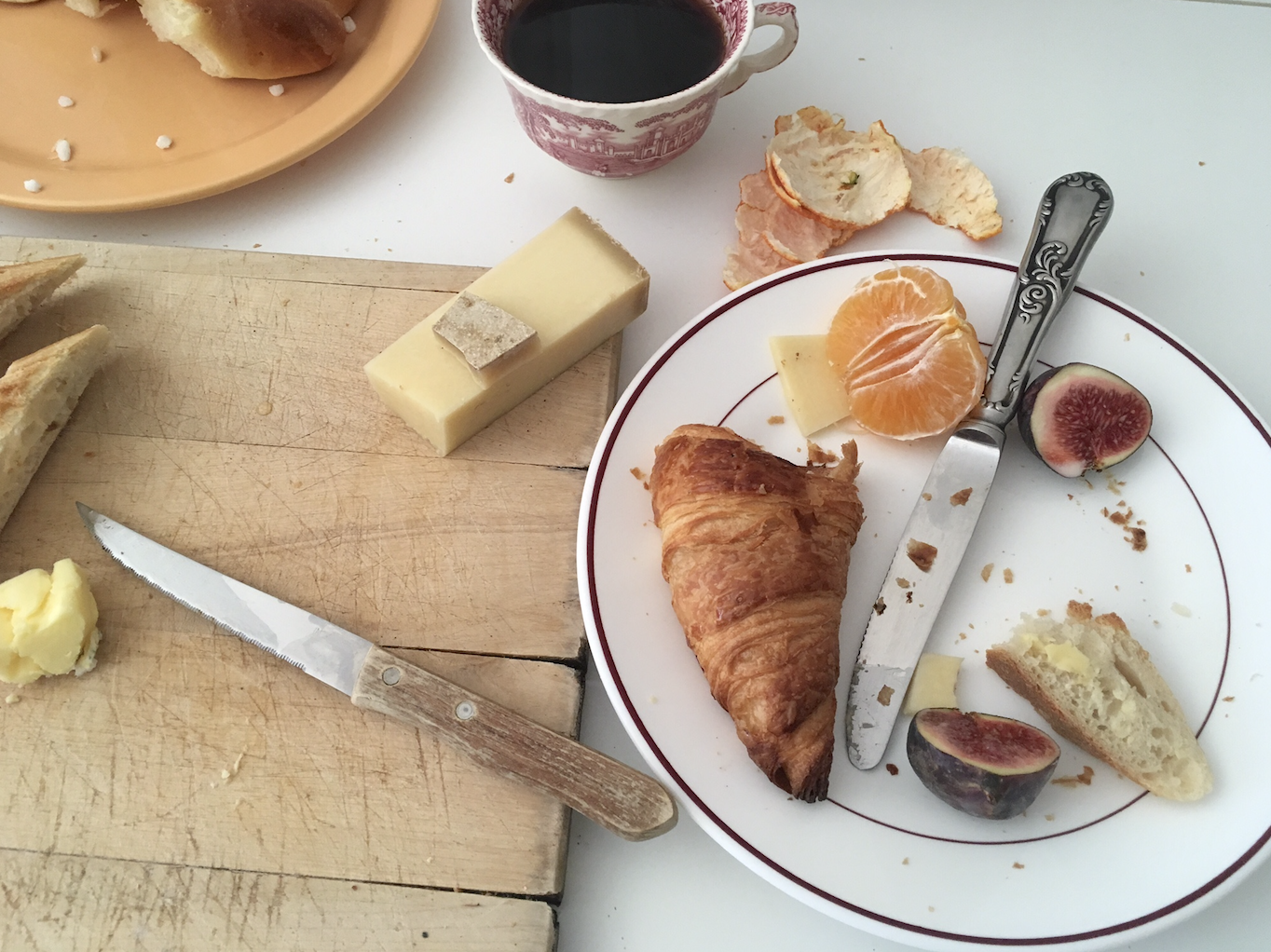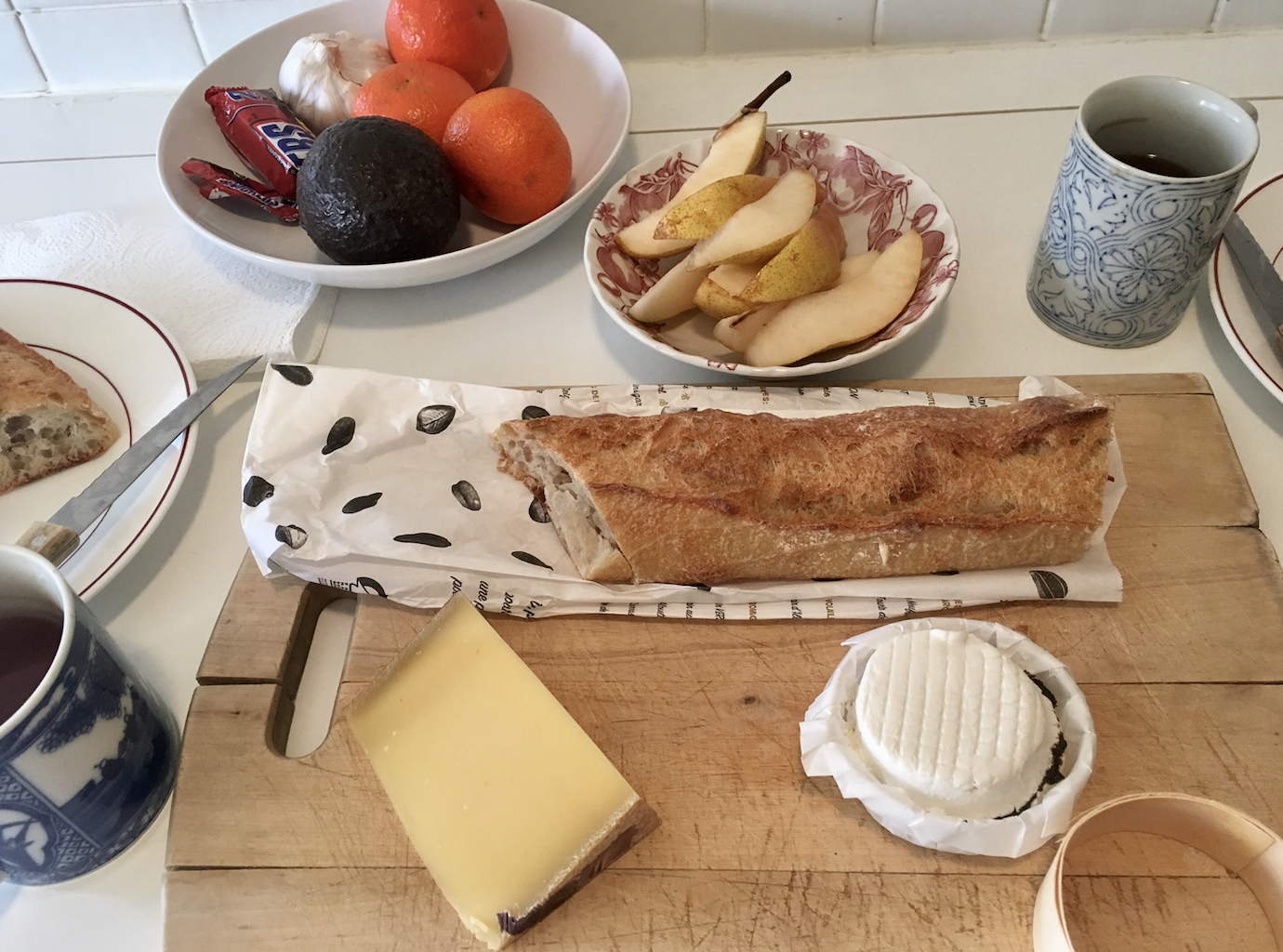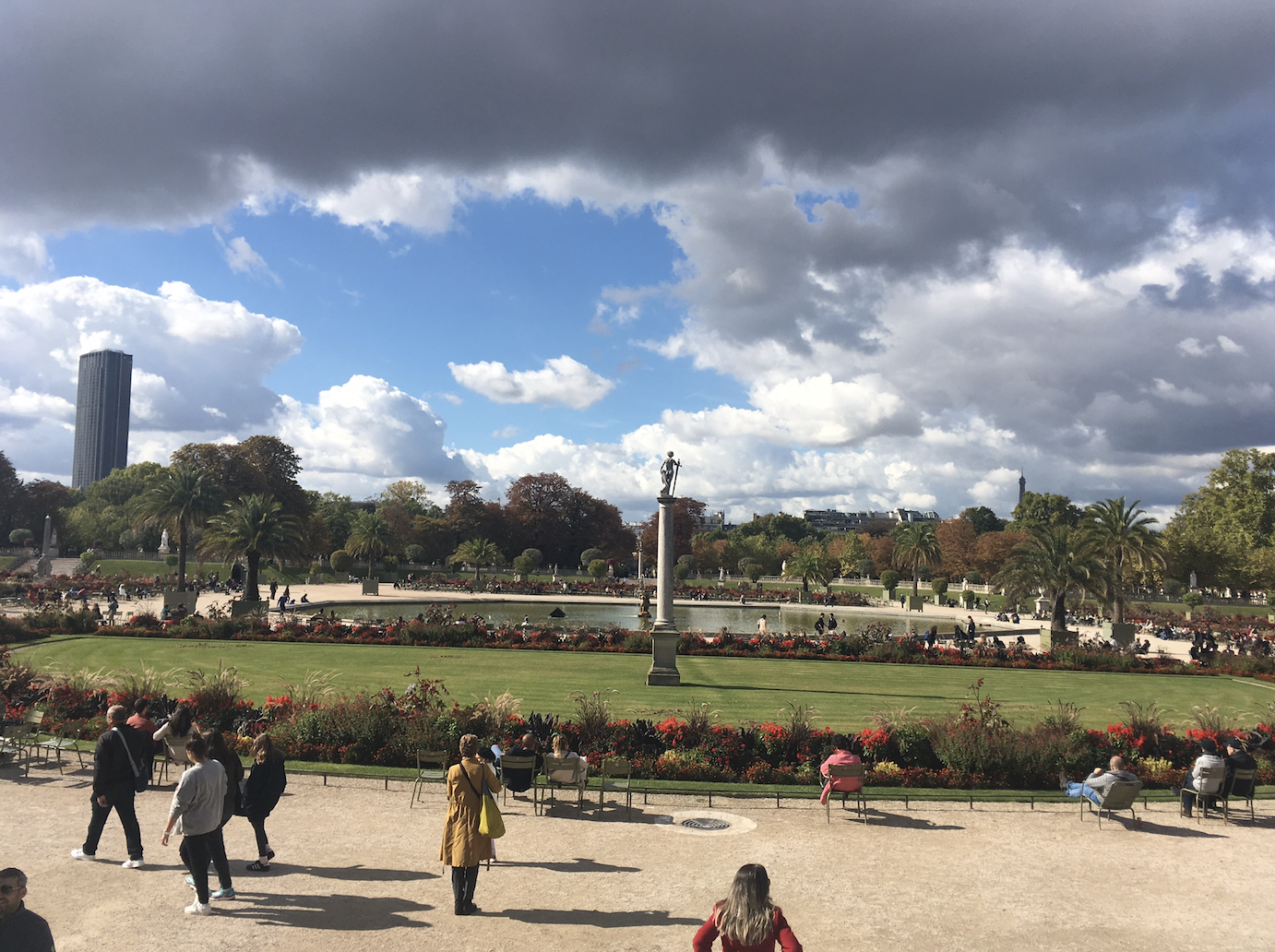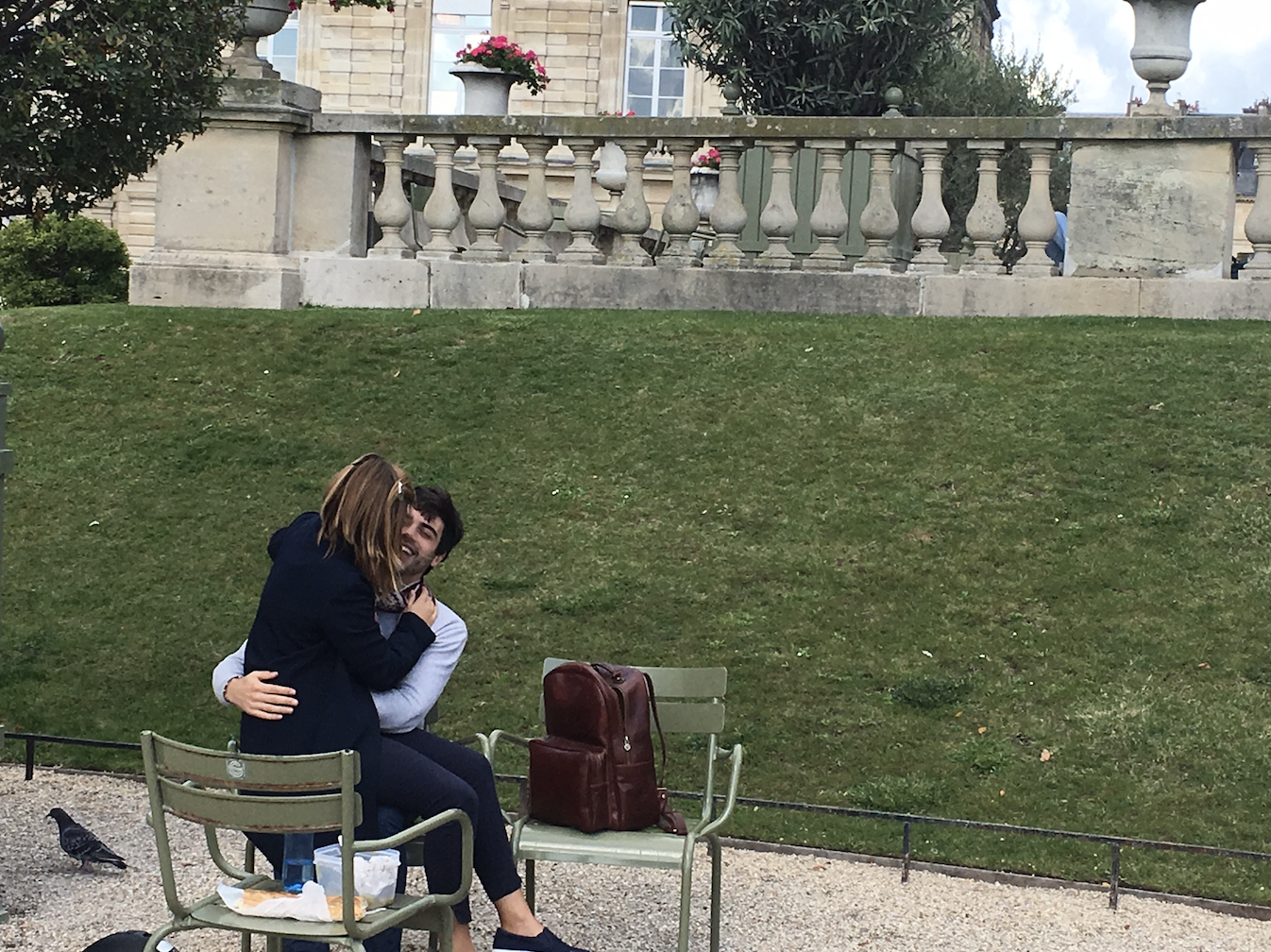Travelling overseas for a few days captures the invisible—the very structure of our lives made visible by the sheer displacement of one pattern with another. My internal clock is wrestling with an eight-hour time change but curiosity and the compression of a short, few days’ visit to Paris force my body to move when I should be tucked in. And without much conscious thought, my traveling companion and I are eating the French way--simple bread, butter, cheese, coffee in the morning; an expansive lunch with wine; more cheese, bread, fruit and paté for late dinner. Staying in an apartment in the 13th Arrondissement adds another layer of easy familiarity. This is a neighborhood filled with more local inhabitants than tourists, and so the bakery is a bakery without the frills of a café au lait on the side. In the morning, we take our warm packages of pain traditionnel and brioche home. We remember in the evening to buy another loaf and carry it home, just like so many other folk—a common silhouette for day’s end.
The Pattern of Breakfast, Day 1, Day 2, Day 3
The nature of patterns is made even more explicit by Pattern Language, a homey looking book first published in 1977 by Christopher Alexander and colleagues as a guide to considerations of architectural planning that go well beyond a single edifice. In a vast and organized list, they break down planning into 253 considerations that place built structure within the syntax of community and personal habit. There is a utopian sense about the list, as it urges us to consider ideas made real through the built environment:
10. Magic of the City
28. Eccentric Nucleus
40. Old People Everywhere
46. Market of Many Shops
63. Dancing in the Streets
107. Wings of Light
The book is a liberating kit of breathtakingly thoughtful parts, allowing even the novice to pay attention to architectural elements that are often invisible, but do so much to shape our sense of well-being.
There appears to be a natural impulse toward pattern that holds a gentle and persistent presence even in the midst of one of our most distracting contexts, the city.
Parisian vegetables placed carefully in rows--the pattern of visual repetition.
Grandson Alex asleep with his red boots toothbrush holder and Little Golden Book of Daddy Stories--the pattern of habit.
Luxembourg Gardens--the pattern of public and private spaces. Photo on the left by Noriko Gamblin.
At home on the weekends, whenever possible, I cook for the week. This is different than what my time pressed parents did--making a raft of casseroles to be frozen and stored. Before leaving for work, my mother removed one such block of potential nutrition to defrost for the day. By evening, we did enjoy something relatively healthy and often good tasting along with salad and hot bread: Sunset Magazine’s Western Meal in One, my dad’s Black Bean Soup and the provenance unknown “Swedish” Meatballs.
My pattern is to create recipe building blocks similar to Pattern Language’s kit of parts to encourage us to eat well and deliciously for the week. These are made as “instant” food to be used when needed and a counter to the sense of ennui that leads us all to the ready-made.
Above, a package of freshly grated cheese at the ready. Below, a salad with roasted almonds. Photo by Ann Cutting.
I roast almonds to be chopped into salads or added to hot cereal. I bake muffins or a quick bread as well as my go to bread for the week, the 21-Hour Boule often served with melted cheese in the morning or in the evening after a long day. I often make crème fraiche or Goat’s Cheese requiring only a bit of planning and barely any hands-on time. And I wash and dry many, many vegetables so that the idea of salad means a simple meditative act of tearing lettuce and chopping a bit of something.
Without fail, in the fall and winter, I make soup—the king or queen of what I call the Pattern Recipe.
- Melt a generous knob of butter or a tablespoon of olive oil in a large pot
- Caramelize onions with salt and seasonings (perhaps a bit of sugar for extra sweetness)
- Add vegetables
- Add broth
- Cook for awhile
- Blend
- Serve with crème fraîche or sour cream or pesto
The challenge of capturing pattern as a lifestyle is amply displayed by my internet search --over ten pages of assistance and exhortations. This is the tenth page on the subject.
My suggestion is less complicated-and tasty too. Make soup! Here to help you on your way is the “Pattern Language of Soup” with its many kits of parts. Till next time.



